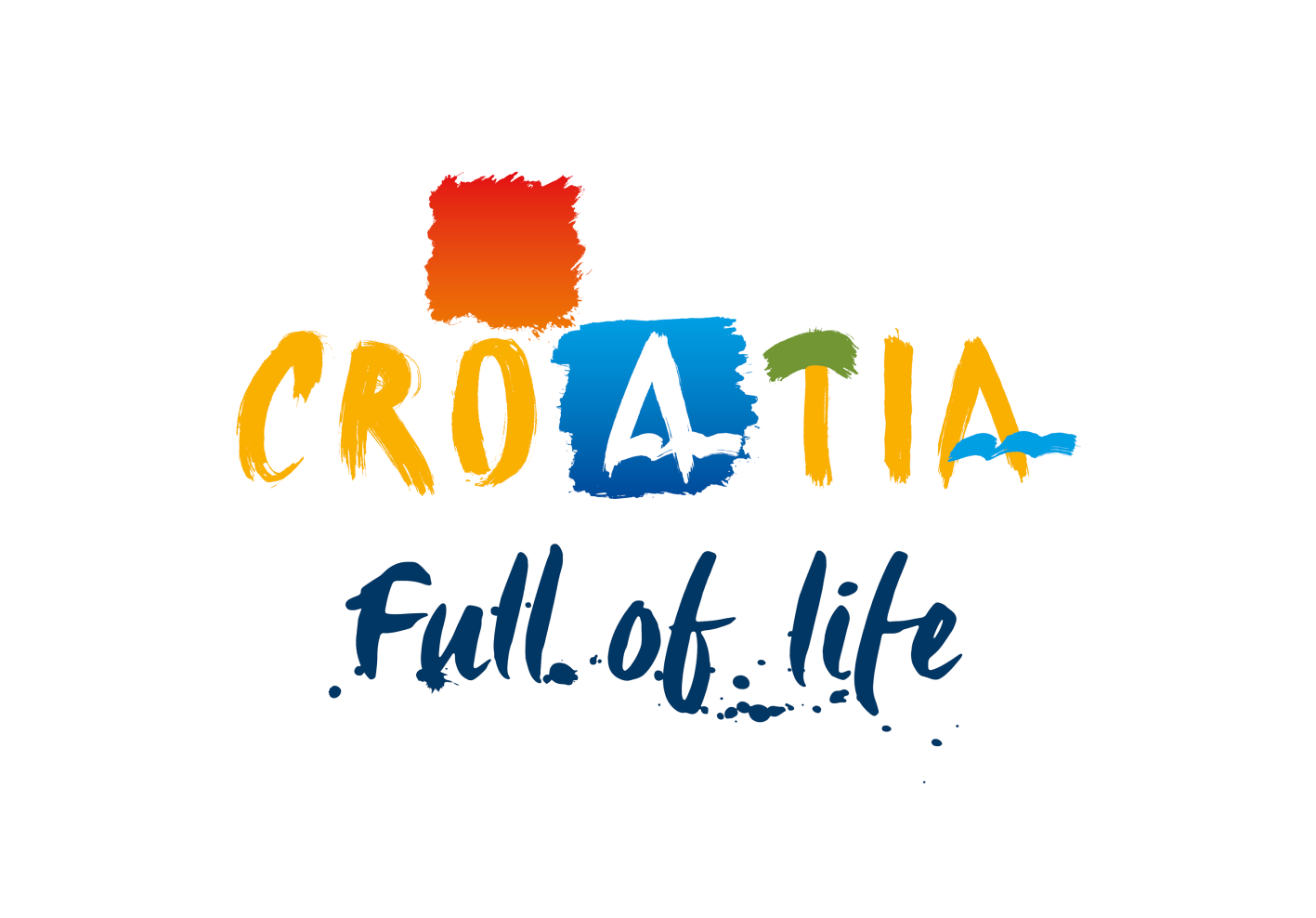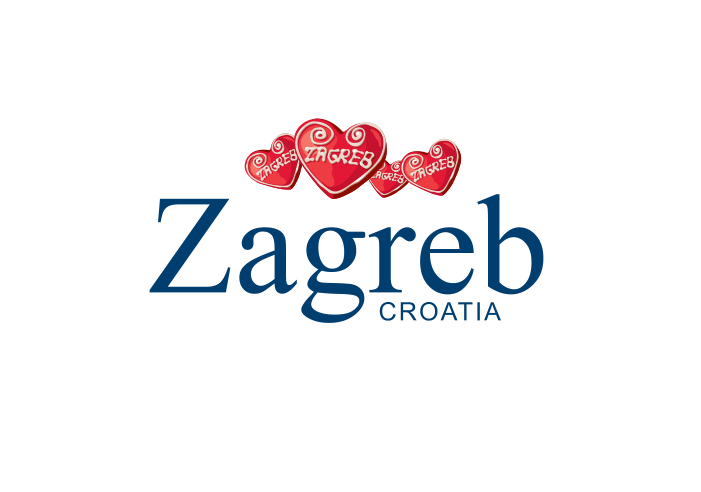BEAUTY OF CROATIA - 7 days
Croatia, Zagreb and surrounding, Zagreb
Duration
Transportation
Route

Itinerary
ZAGREB
Arrival in Zagreb, transfer to hotel, accommodation. Sightseeing of town in the morning; main town square - Ban Josip Jelačić square, Kaptol, cathedral, Gornji grad (Upper Town), Kamenita vrata (the Stone Gate), St. Mark’s church, Croatian parliament, Klović Palace Museum, Lotrščak tower, Nikola Šubić Zrinski square, J.J.Strossmayer square (Art pavillion), King Tomislav square, Marshal Tito square (Croatian National Theatre, Mimara museum). Lunch in a traditional restaurant (not included in the price). Free time for individual town sightseeing and shopping. Overnight stay.
TRAKOŠĆAN CASTLE - VELIKI TABOR - KUMROVEC - ZAGREB
Breakfast. Visiting Trakošćan castle situated in the north - western part of Croatian Zagorje (www.trakoscan.hr). The castle was built in 13th century as a smaller fortress for the oversight of road from Ptuj to Bednjanska valley. Sightseeing accompanied by the expert lead. Visiting Gjalski and Veliki Tabor castles. Driving to Kumrovec – a birth place of Josip Broz Tito that today is an ethno village consisting of 18 houses, each one presenting the aspects of peasants’ life in Croatian Zagorje in 18th and 19th centuries (www.mdc.hr/kumrovec/index.htm). Departing for Zagreb. Overnight stay.
PLITVICE - ZADAR
Departing for Plitvice. Sightseeing of the National Park Plitvice Lakes (www.np-plitvicka-jezera.hr). Dense forest complexes, extraordinary beauty of lakes and falls, rich flora and fauna, fresh air, contrast of autumn colors with many paths and wooden bridges and much more. All that was proclaimed UNESCO’s World Natural Heritage in 1979. The water comes from many small rivers and brooks joined together by the cascades and the falls. Transfer to Zadar. Sightseeing Zadar, a town rich with spiritual and material culture, located around the Roman Forum inside preserved walls with many sacral monuments (St. Donatus Church - the symbol of Zadar, Cathedral of St. Anastasia, St. Krševan Church, St. Mary’s church) and the museums. Overnight stay.
TROGIR - SPLIT
Departing for Trogir. Sightseeing of Trogir, a small town situated west from Split, which is a part of UNESCO’s World Cultural Heritage. The Cathedral of St. Lawrence, The Ćipiko Palace, Town hall, St. Nicholas Church are just some of the sights that will be visited in Trogir. Transfer to Split. Sightseeing of Split includes Diocletian’s palace, included in the UNESCO List of World Cultural Heritage, Jupiter temple, the Cathedral. Split is cultural and art centre which has preserved its heritage for centuries. The town of developed sport and competitive spirit has raised many worldwide famous names: Goran Ivanišević, Toni Kukoč, Dino Rađa...Overnight stay.
STON - DUBROVNIK
Breakfast. Setting off to Ston. This Medieval small town whose history dates back to the 14th century. It is a small town with the longest stone wall in Europe (5.5km) with narrow quiet streets, noble ancient houses and with traces of ancient cultures. Its former value as a “salt city” gets confirmed even today in the plants of the oldest active salt-works in the world. Departing for Dubrovnik. Overnight stay.
DUBROVNIK
Breakfast. Sightseeing tour of Dubrovnik including the Franciscan and Dominican monasteries, the Rector’s Palace and the Cathedral. We will tour the City Walls with its magnificent fortresses and towers. Free time in the afternoon. Dinner and overnight stay.
DUBROVNIK
Breakfast. Transfer to Dubrovnik airport.
Terms of travel
Price includes
- private transfers with english speaking driver
- accommodation in hotels 4* or 5* in double rooms, single rooms
- breakfast
- private city tours with English speaking guide
- stay tax
Price excludes
- meals
- tickets to museums, castles
- everything that is not included under the price includes
Zagreb
Zagreb-An Old City with a Young Soul
Zagreb is the Croatian capital, and largest city in Croatia by population. Historically, the city of Zagreb has grown from two neighboring settlements, Gradec and Kaptol, which form the core of todays Zagreb, its historical center. According to the legend, Zagreb got its name when an old ancient ban, tired and thirsty, makes the girl Manda to bring water from the spring. Ban said: "Mando, dear, zagrabi!“ (zagrabi – grabs)
Zagreb is an administrative, economic, cultural, and scientific center of Croatia. By its position, Zagreb belongs to the cities of Central Europe. Zagreb is situated in continental central Croatia, on the southern slopes of Medvednica and on the banks of the Sava River. Its favorable geographic position in the southwestern corner of the Pannonian Basin, between Alpine, Dinaric, Adriatic and Pannonian regions, the cause is the fact that Zagreb is the transport hub between Central and Southeastern Europe and the Adriatic Sea. Due to its history and significance, Zagreb is rich in monuments and architecture. The center of Zagreb are considered historic district Upper Town and Kaptol, and Donji Grad, which has an exceptional diversity of architecture from Baroque to the present day. The center is surrounded on the north side with residential neighborhoods with higher levels of housing, and to the south of the former working-class neighborhoods that are experiencing strong reurbanisation. Appearance and arrangement, Zagreb is a typical Central European city.
Zagreb is the largest cultural center of the Croatia. The town has several institutions that traditionally have great prestige. In music, it is the Lisinski Concert Hall, in the world of theater, ballet and opera Croatian National Theatre, among libraries National and University Library. Among many quality museums and galleries, the cultural echo exhibitions maybe the most prominent Klović Palace. Zagreb also hosts several significant festivals, such as Animafest - World Festival of Animated Film, which takes place every even year, INmusic - one of the largest open-air festivals in Croatia, International Folklore Festival, theater festival Eurokaz, and Festival of contemporary dance. Zagreb has a film festival „Zagreb Film Festival“, and is particularly interesting ZagrebDox, documentary film festival.
From important exhibitions of recent visual expression, there is Zagreb Salon. From music festivals, there is Zagrebfest, one of the oldest events of Croatian pop music, avant-garde music festival then Music Biennale Zagreb every odd year and the Festival of the Zagreb Philharmonic Orchestra. Since 1996, the streets of downtown Zagreb maintains Cest is dBest, an international multimedia festival of street performers. In the summer, there are also open-air concerts, mostly in the Upper Town (Summer in the Upper Town).
Zagreb Michelin Restaurants
This year Zagreb has received its first prestigious Michelin star, which was awarded to Noel Restaurant. Noel Restaurant has amazed by its superb modern European cuisine and the perfect harmony of delicious creative dishes with Croatian, French and Italian wines.
13 Zagreb restaurants with the Michelin Plate label
Among the 50 restaurants in Croatia that carry the Michelin plate label for the top dishes made with fresh ingredients there are 13 Zagreb restaurants: Pod Zidom, Time, Boban, Dubravkin Put, Apetit, Takenoko, ManO, Zinfandel's, Le Bistro Esplanade, Bistro Apetit by Marin Rendic, Tekka, Mon Ami and Mundoaka which is unfortunately closed.
The famous luxury Esplanade Hotel Zagreb takes two places on this list: Le Bistro Esplanade and Zinfandel's. Le Bistro Esplanade opened in 1986, modeled after small French restaurants. A blend of traditional cuisine and French chic, as well as pleasant ambience attract many local and world famous celebrities.
Bib Gourmand Recommendations
The Michelin Bib Gourmand label has been given to two Zagreb restaurants that stand out for their good quality and affordable menus: restaurants Agava and Tač. In the heart of Zagreb there is a classic Italian Agava restaurant whose large windows offer a magnificent view of Tkalciceva Street. Italian cuisine with a Mediterranean twist combined with a cozy atmosphere makes this restaurant one of the most desirable Croatian restaurants.
A popular family Tač restaurant located at the top of the hill outside the center of Zagreb is known for its Mediterranean menu where you can find many Istrian specialties and simple fresh seasonal food.
Dubrovnik
Dubrovnik - a popular film destination
Popularity of Dubrovnik greatly helped Hollywood movies filmed on its historical streets. The last such project was the series "Game of Thrones" that Dubrovnik lifted high on Hollywood sets. There is no doubt that this popular series has opened many doors for this small town on the Adriatic. Tourism and film industry go hand in hand to each other, so that the future of this city certainly can only further flourish. Fans of this popular series travel miles and miles to see and feel all the locations where their favorite series were filmed to experience the scene from a small screen.
Dubrovnik is a city in southern Croatia, administrative center of Dubrovnik-Neretva County and one of the most historic Croatian tourist destination. It is 25 km distant from the international airport of Dubrovnik, regularly connected with most of European cities, and the 90 km distant from the highway, which connects Croatia with Europe. In addition to a very good air and land connections, Dubrovnik boasts excellent maritime connection. Dubrovnik port is one of the most visited in the Mediterranean. It is the first point maritime route from east to west on entering in the Adriatic Sea, it is protected with islands and the Neretva valley is the fastest communication with the interior. Recent archaeological research found that a settlement on the site of the city existed in the 6th century, and probably before. Dubrovnik expanded with the arrival of the Croats after the ancient Epidaurus (today's Cavtat) in the 7th century.
Of the many manifestations of Dubrovnik, one should emphasize the Dubrovnik Summer Festival, which was founded in 1949. The unique ambience of the closed and open stages of the Renaissance and Baroque city of Dubrovnik in the period from 10 July to 25 August held numerous music, drama and dance performances. The backbone of the festival are works of Marin Držić, Gundulić Ivan, Ivo Vojnovic, William Shakespeare, Carlo Goldoni, the Greek tragedians and others. The musical part of the program presents the best local composers, soloists and orchestras, and their foreign guests. Display even operas, particularly comic. Libertas Film Festival started in 2005 with the idea that the festival cultural offer should be expanded with the film offer. The festival takes place during the summer and on a repertory are films and documentary films from independent productions dedicated to the promotion of freedom in countries around the world. Movies rated best by the audience receives a special audience award.
Plitvička jezera
Plitvice Lakes consist of 16 lakes located between Mala Kapela and Plješivica in Lika. According to the legend, the Plitvice lakes were created after a long drought. People, animals and lakes craved for water. The people prayed and prayed. Then in the valley the Black Queen appeared with her magnificent retinue; she took pity on the people and by the strong wind and thunder, the rain finally start to fall. It was raining so long, until the water level has not grown enough to create the Lakes.
Lakes receive water from numerous rivers and streams, and they are connected by cascades and waterfalls. Travertine barriers, which occurred over a period of ten thousand years, are one of the fundamental features of the park. Vast forest areas, exceptional lakes and waterfalls, flora and fauna, mountain air, contrasting autumn colors, trails and wooden bridges and more are unique area that UNESCO declared it World Natural Heritage in 1979, among the first in the world. The park is divided on narrower and extended zone according to the degree of protection. It is settled in two counties, 91% of the park is in Lika-and 9% in Karlovac County. The National Park consists of 16 lakes, which are stepwise and descend into each other in a series of 5460 m as the crow flies (airline). Lakes are divided on Upper lakes and Bottom Lakes. Top lakes are: Prošćansko jezero, Ciginovac, Okrugljak, Batinovac, Veliko jezero, Malo jezero, Vir, Galovac, Milino jezero, Gradinsko jezero, Veliki Burget i Kozjak. Bottom lakes are: Milanovac, Gavanovac, Kaluđerovac i Novakovića Brod. Lakes soak waters of the Black and White River from the tributaries and Rječica and its tributaries. There are many sources where water abundant springs. These are typical karst springs formed on the faults of permeable and impermeable geological formations. The largest lake is Kozjak with 81.5 hectares, it is also the deepest with 47 m. Prošćansko lake is the second largest and stretches from south to north in length of 2.5 km.
On the Upper Lakes geological structure is mainly dolomite, and on the bottom of the limestone. There are about 30 caves. Travertine barriers, which share one lake from another are from limestone deposited from water. Structure of travertine barriers is very sensitive and fragile and requires a high level of protection. The three main elements: an abundance of water, tufa and travertine. Without water, there would be no lakes nor falls nor lush vegetation. Tufa are plants that produce limestone rocks and change the shape of the lake and lake beds. Travertine barriers are the biological phenomenon of exceptional beauty. One of the most beautiful waterfalls in Plitvice - Waterfall between Milanovac and Gavanovac is called the "waterfall Milka Trnina" after Croatian opera prima donna.
Forests and waters are connected to each other and one without the other can not survive. Forest reserves, preserves and purify large amounts of water. There is a large area in park of high quality forests, including rain forests, which are superior habitat for wildlife. Forests of Plitvica lakes are habitat to three large European carnivores: brown bear, wolf and lynx. Numerous types of woodpeckers and forest owl testify to the high quality and naturalness of the habitat. The forests are the habitat for numerous wildlife. A layer of leaves is one of the richest microhabitats for wildlife in the world. It is home to lizards, insects, various fungi and bacteria. Interesting is endemic insect Molops plitvicensis, who lives in the birch forests only in Plitvice. The park has registered 321 species of butterflies, 157 species of birds and 20 species of bats. Already in 1883, the belt of forests surrounding the lakes and sources was declared a separate zone, where deforestation was banned. They are part of the National Ecological Network and the European project to protect natural heritage NATURA 2000 program.
Zadar
Zadar, the pearl of the Croatian coast, attracts visitors with its rich history, picturesque landscape and unique combination of modernity and tradition. Located on the coast of the Adriatic Sea, Zadar is a city that delights with its cultural heritage, beautiful beaches and the incredible atmosphere that stretches through the streets of its old town core.
Sea Organ and Salutation to the Sun: Zadar is known for its innovative installations that combine art and natural elements. Sea organs are unique musical instruments that produce sounds according to the waves of the sea, creating a melody that intertwines with natural rhythms. Right next to them is Salutation to the Sun, an installation that transforms the sun's energy into light games and spectacular scenes during the night.
Forum: Zadar is home to numerous historical monuments, and the Forum is the heart of the old town. Here you can see the remains of an ancient Roman temple, church and other historical buildings. Take a walk through this stone square and immerse yourself in the city's rich history.
Church of St. Donata: This unique pre-Romanesque church dates back to the 9th century and has become a symbol of Zadar. Its circular construction and simple design leave you breathless, and the interior offers a beautiful view of the city.
Narodni trg: The central square in Zadar, Narodni trg, is the place where locals and visitors meet. It is surrounded by baroque palaces and is an ideal place for drinking coffee or relaxing while observing the city atmosphere.
Beaches: Zadar offers a variety of beaches for all tastes. Borik is a family beach with shallow waters, ideal for children. Kolovare is a city beach with plenty of facilities, while on Puntamica you can relax in a quieter environment.
Evening walks: Zadar becomes especially magical in the evening hours. A walk along the waterfront with beautiful sunsets and illuminated city walls will provide you with unforgettable moments.
Gastronomic offer: A visit to Zadar would not be complete without tasting local delicacies. Try homemade prosciutto, Pag cheese, seafood and traditional Dalmatian specialties. Restaurants in the old city center offer an authentic experience of Mediterranean cuisine.
Zadar is a destination that offers many attractions and experiences for diverse interests. Regardless of whether you are a lover of history, art, nature or gastronomy, this city will surely charm you with its unique atmosphere and rich offer.






